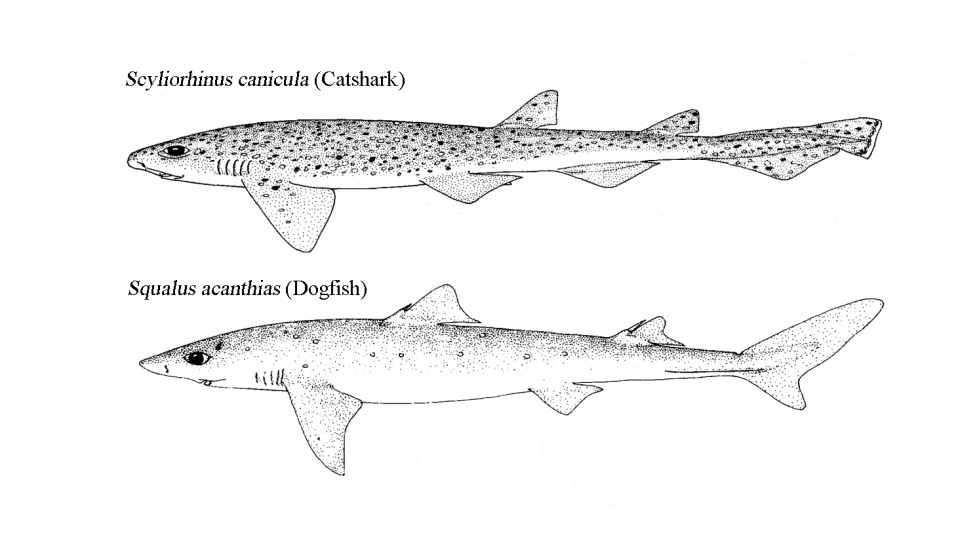The world of animal and plant taxonomy is a tumultuous one, in a nigh-constant state of flux as new discoveries and improvements in genetic techniques change our understanding of how species are related. Several times in recent years I have come across statements that scientists have changed the name of a very familiar member of Britain’s shark fauna; the lesser spotted dogfish (Scyliorhinus canicula). The mention of this on the BBC's Springwatch programme on a couple of occasions culminated in a heated debate on their social media pages. In short, however, no - scientists haven’t changed anything, recently at least.
When early naturalists such as Carl von Linné (aka Linnaeus) started classifying animals in the eighteenth century, they began by clumping similar species together in big groups. In these early days, almost all sharks, from dogfish to great white sharks, were lumped together in the Squalus genus; squalus being the Latin word for shark.
When this particular shark was first described, in 1825, it was put with all the others in Squalus. In the early 1900s, however, when biologists realised that Squalus needed sorting, this species, along with several others, was moved into the Scyliorhinus (catshark) genus.

The first major attempt to comprehensively classify all the sharks known to science was born in 1984, when South African ichthyologist (fish scientist) Leonard Compagno published the first of his two-volume tome Sharks of the World. Compagno reserved the Squalus genus for the dogfish and agreed with the early naturalists that Scyliorhinus canicula was indeed a catshark, based on tooth arrangement and body anatomy, particularly the shape of the tail and the position of the fins. Hence, Compagno endorsed the idea that it was incorrect to call a member of the catshark family a lesser-spotted dogfish.
An issue arises, however, because, historically at least, fishermen had the understandable habit of referring to any common/abundant sharks as “dogfish”, regardless of their actual classification, and it's a name that has stuck in many circles. Consequently, for decades, people have been used to calling them dogfish, even though, technically speaking, this shark has been considered a catshark for at least the last 120 years. The recent pushing of the correct vernacular name of “small-spotted catshark” appears to be an attempt to correct this historical ‘dogma’. After all, to quote Confucius:
“The beginning of wisdom is to call things by their proper name.”